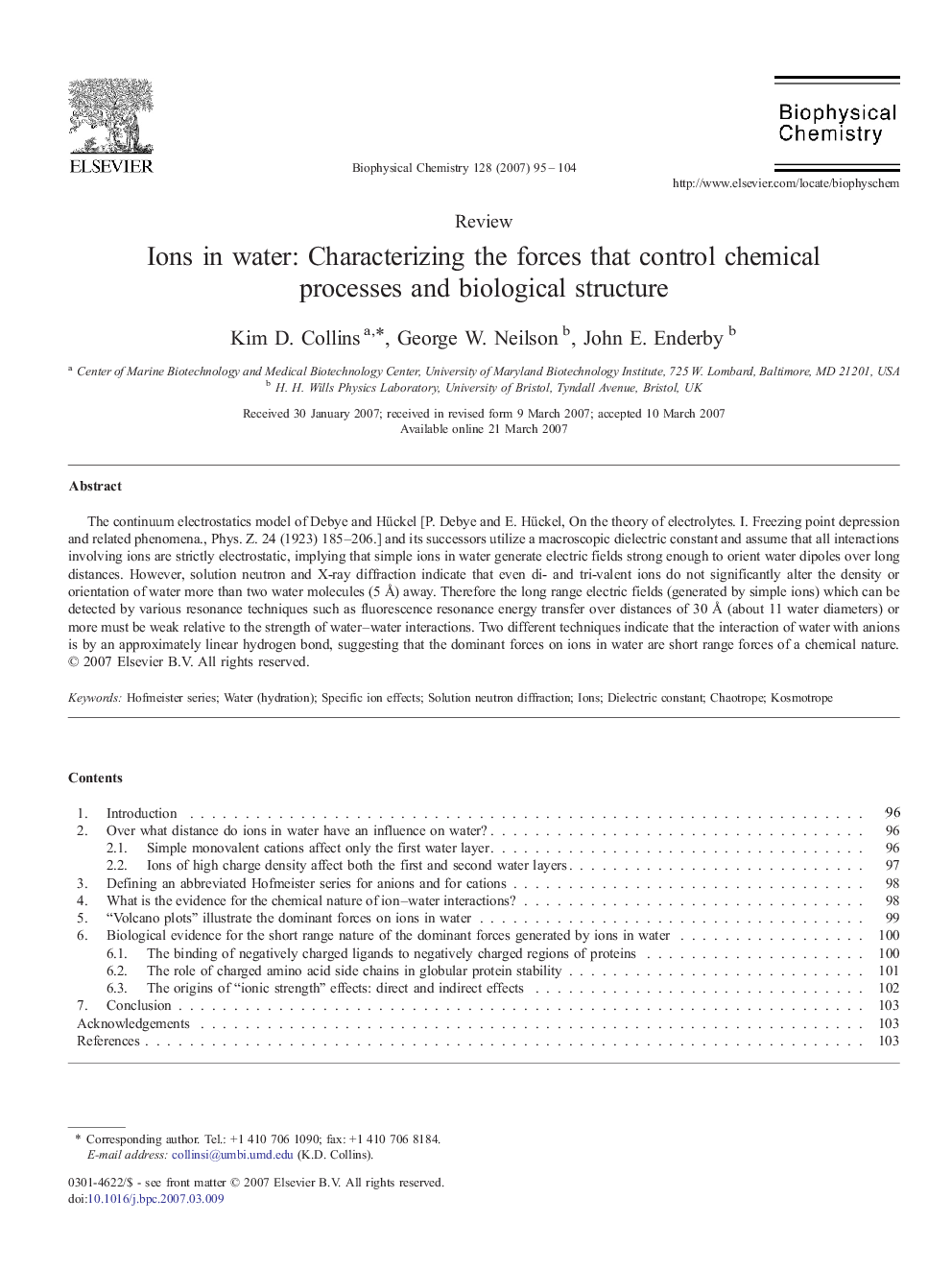| Article ID | Journal | Published Year | Pages | File Type |
|---|---|---|---|---|
| 5372317 | Biophysical Chemistry | 2007 | 10 Pages |
The continuum electrostatics model of Debye and Hückel [P. Debye and E. Hückel, On the theory of electrolytes. I. Freezing point depression and related phenomena., Phys. Z. 24 (1923) 185-206.] and its successors utilize a macroscopic dielectric constant and assume that all interactions involving ions are strictly electrostatic, implying that simple ions in water generate electric fields strong enough to orient water dipoles over long distances. However, solution neutron and X-ray diffraction indicate that even di- and tri-valent ions do not significantly alter the density or orientation of water more than two water molecules (5Â Ã ) away. Therefore the long range electric fields (generated by simple ions) which can be detected by various resonance techniques such as fluorescence resonance energy transfer over distances of 30Â Ã (about 11 water diameters) or more must be weak relative to the strength of water-water interactions. Two different techniques indicate that the interaction of water with anions is by an approximately linear hydrogen bond, suggesting that the dominant forces on ions in water are short range forces of a chemical nature.
